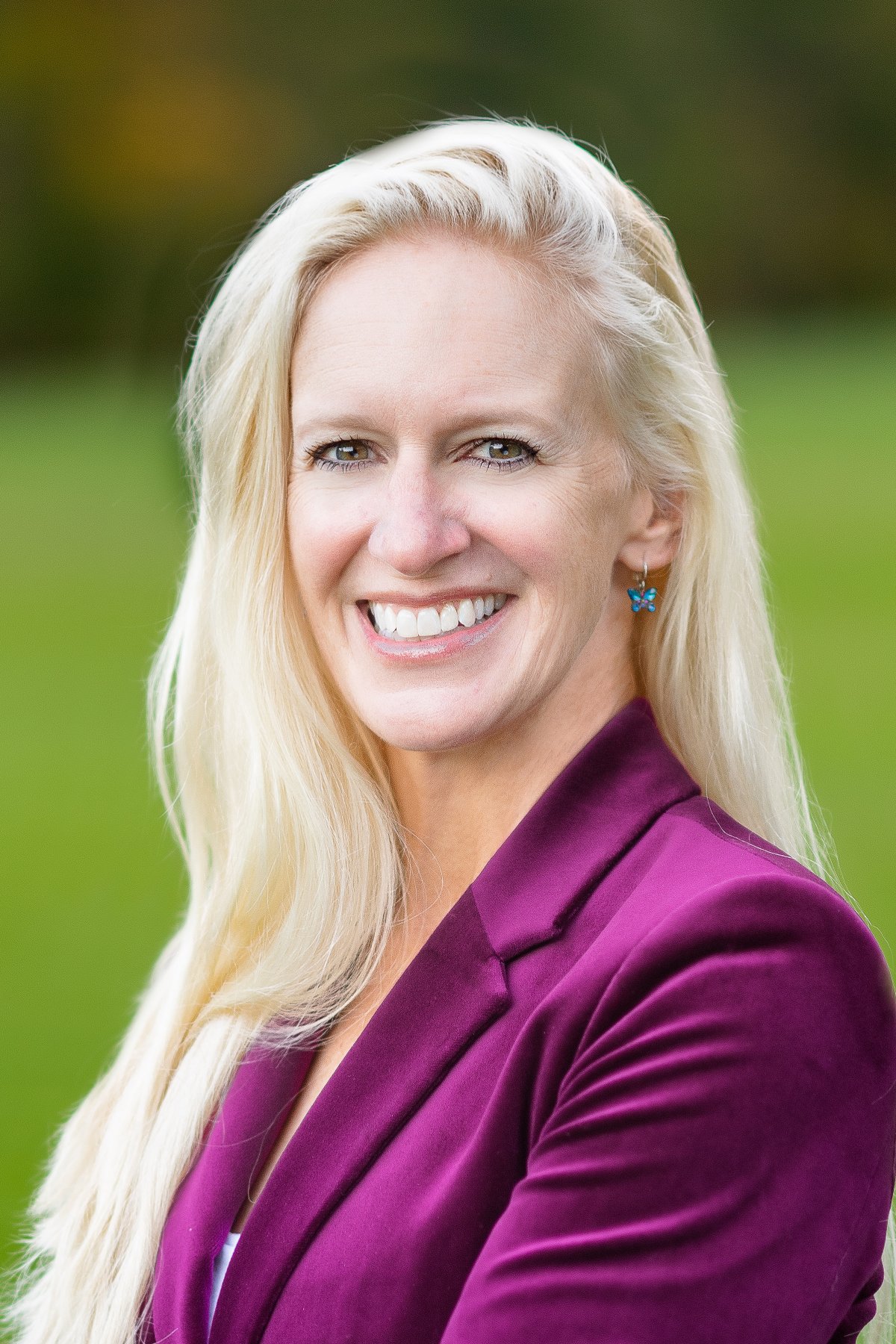
I was speaking with a dear friend this week who is currently undergoing chemotherapy in Missouri. Over glasses of wine and plates full of pasta, we considered why Americans are so unhealthy.
I recited the statistics from the American Cancer Society: 1 in 3 people in the U.S. will receive a cancer diagnosis in their lifetime. My friend, age 86, shook his head and offered a different metric: “When you go to the cancer center, you can’t even find a place to park. It’s packed.”
Reflecting on this later, I was struck by the ease with which the numbers rolled off my tongue. His observation—less precise (though I bet if I called the hospital, they’d have the statistics to back it up)—prodded something deeper, something solemn. I couldn’t shake the cruel image of an ill patient circling the parking lot again and again, the slow recognition of the issue’s scale. It’s like that camerawork cliche in movies, where they show one line of enemy fighters, then slowly pan out to reveal a colossal army.
It makes a person feel small and helpless, which is the exact opposite of how a patient should feel when seeking medical care. Statistics can feel two-dimensional when they’re quoted on internet forums and data reports, but they do have tangible impacts. Patients do notice.
I’ve been researching hospitals’ “digital command centers” lately: the physical and virtual spaces where staff use predictive analytics, AI and other advanced technology to make real-time decisions about care coordination. It can feel like a numbers game, medical and technology leaders told me, but as my friend’s parking lot anecdote illustrates, those numbers have real effects.
Dr. Jennifer Watts, associate chief medical officer of acute care and inpatient operations at Children’s Mercy Kansas City, said that her system managed change by keeping the “why” at the center of the digital transformation. The health system wanted to get patients to the right place at the right time and say “yes” when people needed to go there for care. Technology was framed as a means to that end.
“There were a lot of things that we went through,” Watts said, “but keeping our guiding principles at the forefront allowed people to continue to see where we were going and take some of the emotion of change out of it.”
I’m excited to bring you the full feature on digital command centers in the June 12 edition of Access Health (by the time you read this, I’ll be well on my way to the Medditerannean Sea—so you’ll have to wait two weeks for the next installment of the newsletter). But in the meantime, I’ll leave you with this story from my reporting.
I was speaking with a nurse manager at a hospital that recently launched a virtual nursing program and asked her how patient engagement had been. She told me it had far exceeded expectations, with patients opening up to virtual nurses in ways they rarely did to in-person ones.
Patients can sense when nurses are busy or there’s high anxiety on the floor, she said. They don’t always want to contribute to nurses’ to-do lists, even if they have a real need. But patients never see their virtual nurse hustling or bustling. That space creates a sense of time and ease—giving way to a closeness that, ironically, might not be achieved without the screen.
Essential Reading
- UChicago Medicine alerted patients to a data breach involving the third-party vendor Nationwide Recovery Services, which specializes in debt collection. The breach occurred in July 2024, but the health system says it was not notified until April 8, 2025. Patient data including financial account information and Social Security numbers may have been compromised, the health system said Tuesday—but neither UChicago nor Nationwide Recovery Services is aware of any misuse of the information.
- Average wait times for physician appointments are still on the rise according to a new report from staffing company AMN Healthcare,which examined several specialties across more than a dozen cities. Wait times are up 19 percent since the same survey was last conducted in 2022—and have risen 48 percent since the first edition of the survey in 2004.Ob-gyns have the longest wait timesof the surveyed specialties: nearly 42 days on average, up 79 percent from 2004. The highest wait time recorded in this report was 231 days (note that the average pregnancy is 280 days).Boston had the highest average wait time at 67 days, while Atlanta had the shortest at 13 days.
- Seventy-five percent: That’s the number of children’s hospitals that work to address social barriers to health in their communities.Regardless of whether you have kids, pediatric hospitals are vital pillars of American society, working to protect and heal the next generation while preserving the magic of childhood.That’s why Newsweek and Statista are proud to announce our third annual ranking of America’s Best Children’s Hospitals. Click here to view the full list, which features the top 50 hospitals across eight pediatric specialties.Also, view our list of America’s Best Specialized Hospitals here. This new ranking features the top hospitals for cancer, cardiac, neurologic, orthopedic, endocrine and pulmonary care.
- Space travel is rocketing into the future, and medicine is working to keep up. My colleague, Senior Autos Editor Eileen Falkenberg-Hall, explored the health challenges that astronauts face and the programs that train aerospace physicians.
Pulse Check

athenahealth
Bob Segert is the chairman and CEO of athenahealth, a technology company offering electronic health records, revenue cycle management and patient engagement software.
athenahealth’s primary customers are outpatient, ambulatory care practices—it supports about one fifth of community health centers (CHCs) and a quarter of free clinics across the U.S., according to Segert. These organizations serve about 30 million Americans across all 50 states but are typically under-resourced compared to their counterparts at major health systems.
The company launched athenaone for CHCs last week, expanding its AI-powered platform with specific features for local clinics. Previously, the software was rolled out to women’s health, urgent care, behavioral health and orthopedic practices, and athenaone for ambulatory surgery centers is expected later this year.
On the heels of that announcement, I connected with Segert for a pulse check.
Editor’s Note: Some responses have been lightly edited for length.
athenahealth announced that “value-based care support” will be embedded in its new solution for CHCs. Could you expand on that offering? What can customers expect, exactly?
When you look at community health centers, they really provide holistic, whole-person care: all the way from primary care-type services, through mental health, through dental services. Part of what the CHCs are trying to do is improve the care of the populations that they serve. And key to that is value-based care techniques around population health management, care coordination and care management, as well as their specific UDS [uniform data system] reporting, which is the quality reporting required for CHCs.
Our value-based care services enable all those things. It enables health centers to be able to have a longitudinal view of their populations. Using risk management tools and population assessment tools as part of our overall pop[ulation] health module, it allows them to do care coordination and care planning through the tools that are embedded within athenaone, and it allows them to do UDS reporting and make sure that they’re getting reimbursed and they can actually meet the regulatory requirements that they have as part of the federal funding that they receive in their business. It’s really an integrated, holistic approach to value-based care that allows them to be able to understand the full health of the patient.
One critique of EHRs is that it can be challenging to see that longitudinal view of a patient’s care journey. How does athenahealth paint that picture across a clear, easy interface for clinicians?
It’s really foundationally the way athena was built. We built open architecture, open ecosystem from the start, with full read-write APIs across almost every data attribute within our software. And we use those APIs ourselves: So whereas other [solution providers] have built on premise-based systems, where they’ve had to try to scramble to open up their content, we were actually built [as an] open ecosystem.
That’s a massive advantage across our SaaS-based platform—which is another key thing, we’re one version to code. Every single one of the providers that uses athena is on the same platform. Some of our competitors may have an on-premise system that may not have been upgraded for the last five, six or seven years. When we upgrade athena every night (sometimes, for security reasons or other maintenance reasons), and three formal times a year, every single practice gets the new code, and they don’t have the option not to take it. So that means that we’re current. We’re using these open APIs. We’re bringing the data in.
We have a common snowflake-based data lake. It allows us to create this longitudinal patient record. We have a unique patient ID for every patient, so Alexis, if you are at an athena practice and you consented, you could allow any one of your practices to share that athena data with the other practices on a theme that you see, and it would have one single view.
Our unique architecture, the way we’re built, it allows us to be so nimble and agile with regard to patient record sharing and of holistic patient information in the chart.
C-Suite Shuffles
- Tom Cowhey is the new CFO of athenahealth, effective June 9. He most recently served as executive vice president and CFO of CVS Health, and previously held the same title at Surgery Partners.The morning of the announcement, Segert, athenahealth’s CEO, told me: “One of the things that’s so exciting about Tom is not only that he’s a good human being and a great leader, but that he’s seen athenahealth from a lot of different angles. … He really understands our business, across the spectrum of it.”Cowhey’s former employers, CVS Health and Surgery Partners, are athena clients—so he has engaged with the software from a user perspective. He also worked at Aetna and can provide valuable insight to the insurance side of the business as athena has a “burgeoning” payer business, Segert added.
- CVS Health has some news of its own after naming Dr. Ravi Patel its vice president and chief health informatics officer for health care delivery. He spent the last 11 months, roughly, as senior vice president of service operations at Oak Street Health—which CVS acquired in 2023.
- NYC Health + Hospitals selected Dr. Anitha Srinivasan to lead its Metropolitan Hospital as chief medical officer. She currently serves as Metropolitan’s director of perioperative services and will become the hospital’s first female CMO when she takes the reins on June 1, according to a news release from the health system.
Executive Edge

Qualtrics
Dr. Adrienne Boissy is the chief medical officer of Qualtrics and the former chief experience officer of Cleveland Clinic, where she still serves as a staff neurologist and multiple sclerosis specialist.
Boissy is full of great tips—like wearing the same pair of butterfly earrings each day, both to bring some sparkle into “boardrooms that are serious and gray” and to avoid dedicating any “brain power” to changing them.
During our conversation last week, she shared the concept of a “joy pie”: like a strategic plan, but for yourself. Here’s her advice to other busy executives and physicians looking to redefine their priorities:
- “Given that I’ve worn some executive hats and leadership hats and practice hats, a couple years ago, I decided I needed to do my own personal strategic plan. I found that my locus of control was more external—what job title I had, or where I was working and how it was going. I really made a fundamental shift to craft my own “joy pie,” my own personal strategic plan, which [asked] what will make my life filled with meaning and purpose for the next 10 years. What does that look like for me?
- “And I had never done that in my whole career. I had built lots of business plans but I had never actually turned it internal. So I mapped out on a circle how I want to spend my energy and time for the next 10 years. What was important to me in that; what would my legacy be? What would bring me joy?
- “On that pie wound up things like: do work that reduces suffering, creates joy. Become a Pilates guru. (I’m a washed-up ballerina, so making sure I was still dancing or moving, or having that physical outlet was incredibly important). Be the friend I want to have. I was working so long, 12- to 14-hour days with a 45-minute commute, that I was the sloppy friend—forgetting my friends’ birthdays or not showing up. And let’s not forget, these are the people coming to your funeral.
- Being present with my family—I know we use that word a lot [“present”]. I would just say it is so easy to overrun family time with your phone or just take that one extra call or do that one more thing. Now I’m very cognizant of modeling to my kids: put it down, turn the ringer off, and we’re not going to have our phones at dinner or at family time. We’re going to play ping-pong instead.”
Thanks for reading, and I’ll see you on June 12!
This is a preview of Access Health—Tap here to get this newsletter delivered straight to your inbox.




